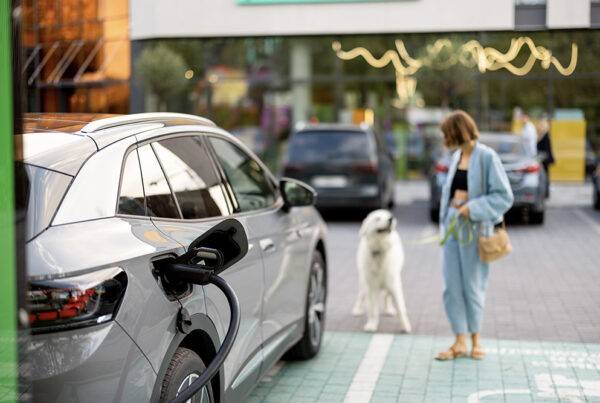Beyond the opportunities it offers to the hospitality industry, a charging station installation project is an occasion to bring one’s establishment into compliance with the Mobility Orientation Law/a> (LOM) of 24 December 2019. Indeed, by 2025, certain companies will have to pre-equip or equip their car parks with charging points for electric vehicles. As non-residential buildings, hotels and restaurants are directly concerned. What obligations do hoteliers and restaurateurs have regarding the installation of charging stations? Who is affected? What are the key dates? Follow the guide!
Existing hotels and restaurants: A quota of charging points to respect
With the aim of deploying electric mobility, the LOM law imposes obligations on companies to equip or pre-equip their car parks. These obligations depend on two criteria:
- The age of the non-residential building,
- and the capacity of the car park.
Thus, if your hotel or restaurant is considered an “existing construction” (i.e., whose building permit was filed before 11 March 2021) and has a car park of at least 20 spaces, you are subject to an equipment obligation. In this case, from 1 January 2025, your car park must have at minimum:
- 5% of spaces equipped with charging points (i.e., 1 space out of 20);
- 1 space sized for people with reduced mobility (PRM).
Depending on the size of the car park, you will also need to provide 1 additional space equipped with a charging point for every 20 spaces.
From 200 spaces, your car park must have 2 charging points on PRM-sized spaces. Moreover, one of them must be exclusively reserved for them.
New hotel and restaurant constructions: Mandatory pre-equipment
The LOM law stipulates a different obligation for new constructions. Specifically, “new construction” refers to:
- Buildings whose construction permit was filed after 11 March 2021 ;
- • Buildings that underwent major renovations after 11 March 2021 (where the cost of the work represents at least a quarter of the building’s value).
If your hotel or restaurant falls under the “new construction” category mentioned above and has a car park with at least 10 spaces, il est alors soumis à une it is subject to a pre-equipment obligation.
-
What Does Pre-Equipment Involve?
Pre-equipment should not be confused with the installation of charging stations.
In practice, pre-equipping a car park involves installing the necessary conduits for the future installation of charging stations, including the routing of electrical cables and the setup of power and safety devices. Pre-equipment also ensures that the necessary power is available for the future installation.
-
What Quotas Must Be Met?
For new constructions, the LOM law requires that car parks with more than 10 spaces be pre-equipped for at least 20% of the spaces (i.e., 1 in 5 spaces).
Additionally, at least 2% of these spaces must be PRM-sized, with a minimum of one dedicated space.
However, if your car park’s capacity exceeds 200 spaces, the law mandates:
- At least 40 pre-equipped spaces(i.e., 20% of the total);
- At least 2 spaces equipped for charging, sized for PRMs, with at least one exclusively reserved for their use.
-
What sizing should be planned for your electrical installations?
To pre-equip your establishment’s car park, the law requires that the conduits for routing electrical cables be sized to allow for a square passage of at least 100 mm on each side.
As for the electrical energy to power the car park’s charging stations, it must be supplied by either:
- A low-voltage general switchboard located within the building;
- Or a network facility of the public electricity grid located within the building’s footprint.
Whichever option is chosen, the low-voltage general switchboard must be sized to power at least 20% of the total parking spaces, with a minimum of one space equipped with a charging station.
The electrical power required for the installations will vary depending on the number of available spaces in the car park.



